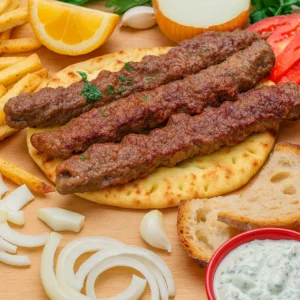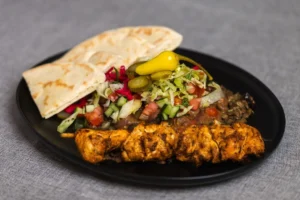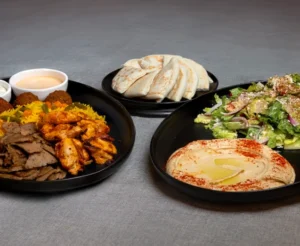Pita Bread: History, Nutrition & Delicious Ways to Enjoy It
Soft, chewy, and famous for its signature pocket, pita bread is a beloved staple across Mediterranean and Middle Eastern cuisine. Its versatility makes it perfect for sandwiches, wraps, chips, pizzas, or simple dipping. In this guide, you’ll discover the origins of pita bread, its nutritional benefits, and creative ways to enjoy it at home.
The Origins of Pita Bread
Pita bread has been enjoyed for thousands of years, with roots tracing back to ancient Middle Eastern and Mediterranean civilizations. While its exact birthplace is hard to pinpoint, historians believe early forms of pita were baked by some of the world’s earliest agricultural societies.
The word pita is derived from the Greek term meaning “flat” or “solid,” reflecting the bread’s round, flat shape. Traditionally, pita is baked at very high temperatures, causing steam to puff the dough and create the iconic pocket that makes it perfect for stuffing.
Nutritional Benefits of Pita Bread
1. Whole Grain Options for Added Nutrition
Many pita breads are made with whole grains, providing fiber, vitamins, and essential minerals. Whole grain pita is a healthier alternative to refined versions and supports digestive wellness.
2. Naturally Low in Fat
Classic pita bread is typically low in fat, making it a smart choice for balanced meals and health-conscious eating.
3. A Versatile Source of Carbohydrates
As a nutrient-rich carbohydrate, pita bread provides energy and pairs well with proteins, legumes, and vegetables for a balanced meal.
4. Can Be Higher in Protein
Some modern pita variations contain chickpea flour or other protein-rich ingredients, offering a more filling option and supporting active lifestyles.
Creative & Delicious Ways to Enjoy Pita Bread
1. Classic Pita Sandwich
Use the pocket to build delicious sandwiches. Fill with grilled chicken, fresh vegetables, hummus, or tzatziki for a flavorful grab-and-go meal.
2. Homemade Pita Chips
Cut pita into triangles, brush with olive oil, and bake until crisp. Season with garlic, sea salt, cumin, or za’atar. Serve with hummus or your favorite dips.
3. Quick Pita Pizza
Use pita bread as a mini pizza base. Add tomato sauce, cheese, and toppings, then bake until melted and bubbly—a fast, customizable weeknight meal.
4. Stuffed Middle Eastern-Style Pita
Fill warm pita with falafel, tahini, lettuce, tomatoes, and cucumbers for a hearty, traditional Mediterranean meal.
5. Pita Wraps
Roll your favorite fillings inside a soft pita—turkey and avocado, roasted vegetables with feta, or shawarma-style proteins all work beautifully.
6. Breakfast Pita
Start your morning with a pita filled with scrambled eggs, spinach, and cheese for a quick, protein-packed breakfast.
Conclusion
Pita bread is more than just a simple flatbread—it’s nutritious, versatile, and deeply rooted in Mediterranean history. Whether you enjoy it stuffed, baked into chips, or used as a base for creative recipes, pita bread is a delicious addition to any meal. Embrace its rich tradition while exploring new ways to bring this classic staple into your everyday cooking.
FAQ About Pita Bread
Is pita bread healthy?
Yes. Especially when made with whole grains, pita bread is rich in fiber, low in fat, and provides balanced energy.
What makes pita bread puff up?
High baking temperatures create steam inside the dough, causing it to puff and form a natural pocket.
Can pita bread be gluten-free?
Yes. Some bakeries offer gluten-free pita made from alternative flours like chickpea or rice flour.
How should pita bread be stored?
Store in an airtight bag at room temperature for up to several days or freeze for long-term freshness.
Can you make pita bread at home?
Absolutely. With flour, water, yeast, and high heat, homemade pita is simple and delicious.












